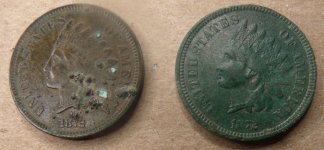So I'm beginning to realize that MD's are like cars. . no matter how good the one you've got is, it always tempting to think another one might be better.
I currently own and use a Bounty hunter 505, Whites Prism 3, Tesoro Cibola, and a Tesoro Tejan- I like them all and have learned that each has it's place (even the Bounty Hunter)
I'm thinking of buying a machine that can fit most of these features into one, and so far have considered the Whites DFX or XLT or MXT or the Fisher F75.
I mainly relic hunt in North Georgia and South Carolina, but am beginning to enjoy coin shooting. Not really planning on nugget hunting any time soon.
Any advice or words of wisdom would be greatly appreciated.
Thanks!
I currently own and use a Bounty hunter 505, Whites Prism 3, Tesoro Cibola, and a Tesoro Tejan- I like them all and have learned that each has it's place (even the Bounty Hunter)
I'm thinking of buying a machine that can fit most of these features into one, and so far have considered the Whites DFX or XLT or MXT or the Fisher F75.
I mainly relic hunt in North Georgia and South Carolina, but am beginning to enjoy coin shooting. Not really planning on nugget hunting any time soon.
Any advice or words of wisdom would be greatly appreciated.
Thanks!




